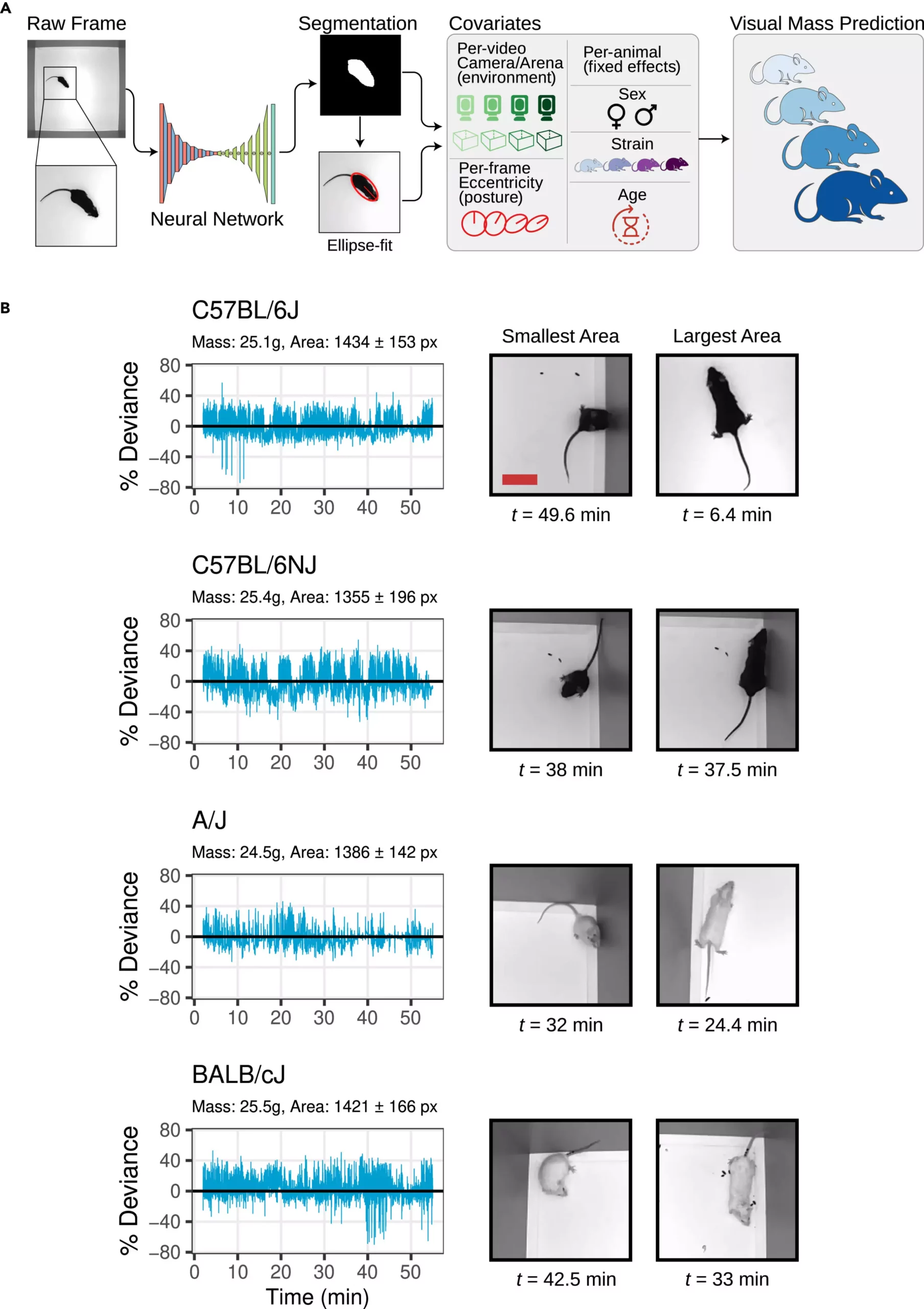The measurement of body mass in biomedical research, particularly when working with mice, has long been a stressful and limiting process. Traditional weighing techniques involve removing the animals from their cages and placing them on a scale, which can introduce variables that affect experimental outcomes. Moreover, these measurements are typically infrequent and can impact the accuracy and reproducibility of data. However, a research team led by Jackson Laboratory (JAX) Associate Professor Vivek Kumar, Ph.D., has developed a non-intrusive method using computer vision to accurately and continuously measure mouse body mass. This innovative approach aims to alleviate the stress associated with traditional weighing techniques and improve the quality and reproducibility of research involving mice.
The Development of Non-Intrusive Measurement
Kumar and his team of computational scientists and software engineers, including first author Malachy Guzman, utilized computer vision technology to analyze a large mouse video dataset. By incorporating multiple visual metrics, machine learning tools, and statistical modeling, they were able to calculate body mass with less than 5% error. This groundbreaking method, published in the journal Patterns, provides researchers with a new resource that can enhance the quality of preclinical studies. The team faced numerous challenges in developing this method, including the dynamic nature of mice and the diverse range of mouse strains used in laboratory settings. Through extensive training with genetically diverse mouse strains, the team was able to create statistical models that accurately predict body mass, even in the presence of variable visual and size distributions.
Advantages of the New Method
This non-intrusive method offers several key advantages for researchers in the field of biomedical research. It allows for the detection of subtle changes in body mass over multiple days, which can be crucial for studies involving drug or genetic manipulations. Additionally, this method has the potential to serve as a diagnostic tool for general health monitoring and can be adapted to different experimental environments and other organisms in the future. By providing a stress-free and accurate way to continuously measure mouse body mass, this innovative approach promises to revolutionize the way researchers conduct preclinical studies.
The development of a non-intrusive method for measuring mouse body mass using computer vision represents a significant advancement in the field of biomedical research. By eliminating the stress associated with traditional weighing techniques and improving the frequency and accuracy of measurements, this innovative approach has the potential to enhance the quality and reproducibility of preclinical studies. Researchers can now more effectively monitor changes in body mass, leading to a better understanding of overall health and potential health issues in experimental subjects. With further refinement and adaptation, this method could have far-reaching implications for a wide range of research applications, ultimately benefiting both human and animal health outcomes.


Leave a Reply